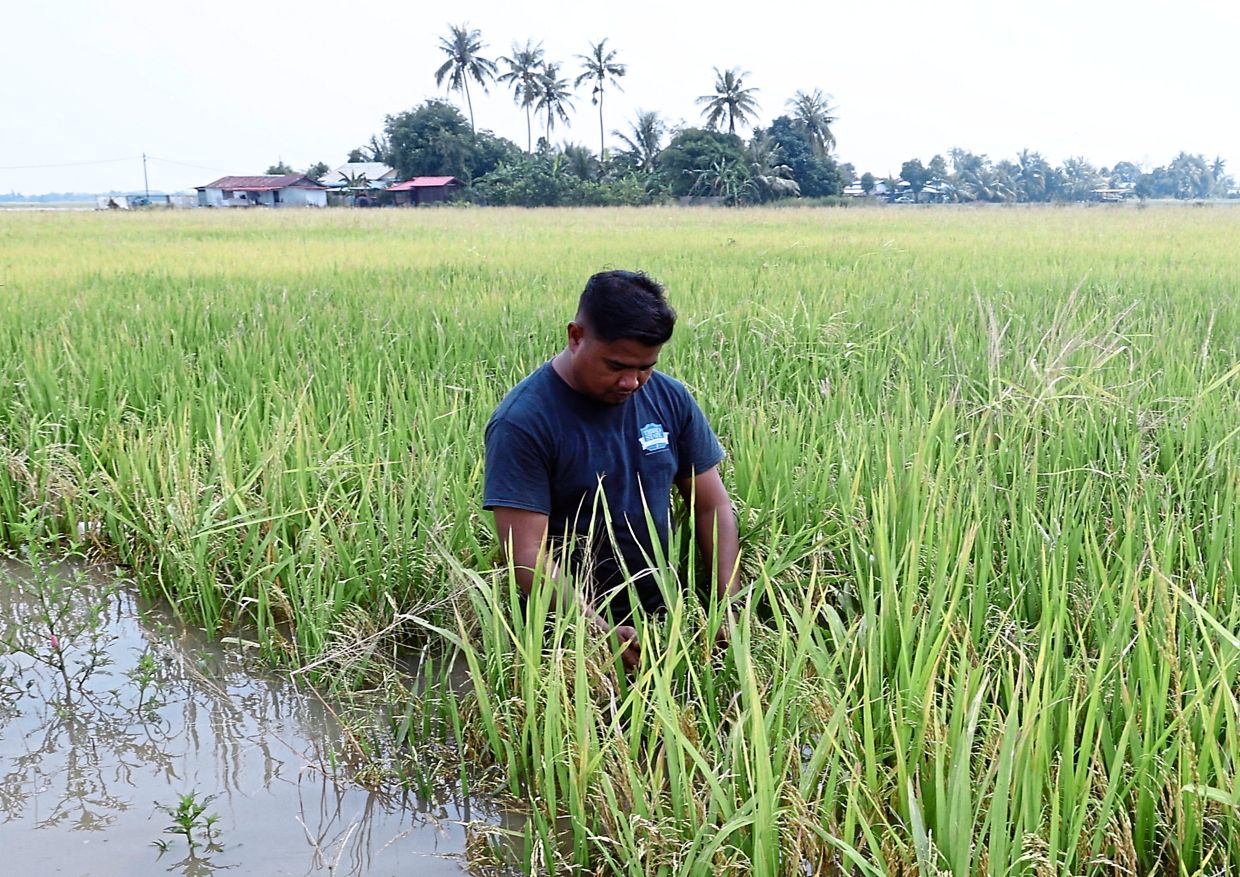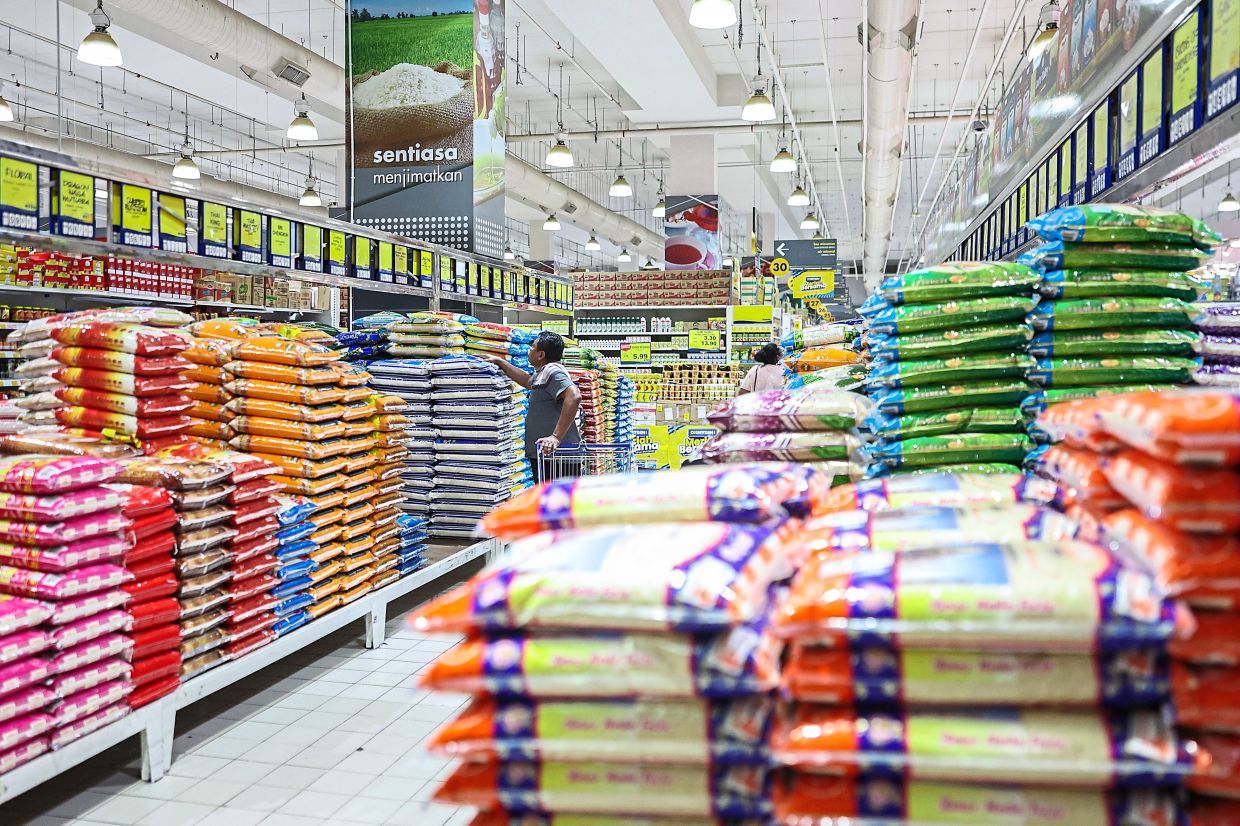THE local rice supply shortage has rudely rattled most of us. Naturally, it’s been followed by the traditional finger pointing.
The grain has inexplicably vanished from supermarket shelves, while the price of imported rice has spiked.
The facts indicate that we’ve neglected food production – including rice farming – for decades. How many of us, especially our politicians, are truly concerned about the matter or have provided sound solutions?
The country spent about RM76bil on food imports last year, an increase from 2021’s RM64bil.
Basically, 60% of Malaysia’s food is imported. We are highly dependent on food and beverage products, especially raw materials for food processing such as wheat, dairy and other ingredients.

Crop crunch: Rice farmer Muhamad Syafiq Afandy Muhamad Sofi inspecting his padi after a flood in Kedah. Extreme weather events have threatened rice production in many countries including Malaysia. — Bernama
Malaysia doesn’t produce enough to feed us. Cameron Highlands can’t supply sufficient amounts of vegetables, and the result is us having to import them from China, Indonesia, Argentina, Thailand and India.
The price of rice spiked when India, which accounts for 40% of the world’s supply, decided to halt rice exports recently.
There was also an earlier report by Reuters saying Vietnam intends to cut its annual rice exports by 44% to four million tonnes by 2030.
But Vietnam has since denied the report, saying it will maintain the status quo.
There are many reasons why rice production has suffered. Climate change has led to erratic weather that has threatened production in India and other countries. Malaysia hasn’t been spared either.
Floods, droughts and heat stress have been contributing factors, with the agricultural sector’s share of the nation’s GDP declining from 43.7% to 7.1% between 1960 and 2021, reveal reports.
But the situation has worsened. The national rice average yield is low, at a little over three tonnes per hectare.

In most supermarkets, only imported rice is left on sale but its price has spiked. — Bernama
The country’s self-sufficiency rate was only 65% in 2021 compared with the set target of 75% in the 12th Malaysia Plan (2021-2025).
Even Bangladesh is self-sufficient in its rice production, fish, meat and eggs. And so is Myan-mar, with a self-sufficiency rate of 179.4%.
The debate may be raging over the local rice shortage, but no one seems to be able to give a definite reason for its absence from supermarkets.
There are many conspiracy theories, including blaming the present unity government and sole importer Padiberas Nasional Bhd (Bernas), hoarding by wholesalers and millers, and suppliers repacking and mixing local rice with imported rice to make bigger profits.
Against this backdrop, many Malaysians have reduced rice consumption as the country becomes more affluent and health conscious.
But for the B40 (lower income) group, rice is a staple food, and the lack of local rice is detrimental, and predictably, the situation has been exploited politically.
According to reports, rice per capita consumption has declined over the years from 120kg in the 1970s to 77kg in 2022.
But rice imports have still risen, going from 1.06 million tonnes in 2021 to 1.11 million tonnes in 2022.
We are feeling the pinch, or pain, now because the ringgit’s value has diminished. Food production cost has also gone up because of the war in Ukraine, which has affected feed for animals as well as fertiliser.
There have been calls to end Bernas’ monopoly as the sole rice importer, but many analysts are doubtful others, if allowed, are prepared to meet the conditions imposed by the government on Bernas.
Few are aware that the caveat includes buying very bad quality padi from local farmers.
The Edge quoted Sarena Che Omar, Khazanah Research Institute deputy director of research, as saying, “When you buy low quality rice, you make a loss because there is a price floor”.
She has some advice: “If we want to get rid of Bernas because we think that monopolies are so bad, we must make sure we put in place [someone] who will take care of the stockpile.
“Until we settle all this, we had better be careful about what we want to kick out, as that entity may be the one keeping things going on as usual.”
Bernas is paying RM1,280 per tonne even for poor quality padi because that’s the price floor. Nothing less because that’s the deal.
So is there a shortage of local rice? According to The Edge, which quoted an Agriculture and Food Security senior official, at the current rice stockpile level, it would be sufficient under normal circumstances, excluding a war or a prolonged natural disaster.
The Agriculture and Food Security Ministry needs to be given plenty of support and attention if Malaysia is serious about wanting to be self-sufficient in food production and reducing our food import bills.
We need to address some serious issues, which are the reasons for the decline in local padi production.
The price of padi is low, it is difficult to source for labour, more padi fields are being converted into development land, especially in Kedah and northern Perak, farmers are mostly senior citizens, while its low price is not making it viable for commercial farming.
We need to improve rice production beyond Kedah, Kelantan, Perlis, Perak and Selangor. The risk is too high for Malaysia to be dependent on just these few states.
If diseases or climate change affect these states, production is undoubtedly hit, immediately. Certainly, we need help from China to improve our yield using modern technologies.
It’s serious food for thought for our leaders, policymakers and stakeholders.





